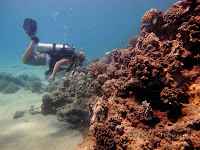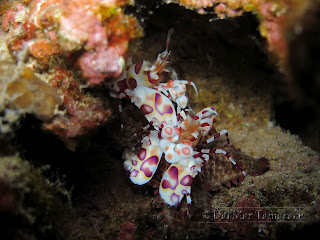Molokini Kayak Adventure

Molokini Crater is hands down one of the best dives out here in Hawaii. And it is big enough to several different dive sites since you can't explore the entire crater all in one dive. Its location has pros and cons. Being about four miles offshore it avoids runoff and suspended sediment that occasionally affects the shoreline of Maui and it is sometime subjected to pretty wild currents which seem to bring in the big fish like sharks. But being that far offshore you have to pay alot to go on a boat dive with one of the many scuba tour companies. mushroom coral Unless you feel up to the challenge! Heidi and I had this planned for days. We rented scuba tanks the night before, loaded the kayak on top of the car, and piled up all our snorkel and camera gear. The next morning we woke bright and early, drove to the kayak put in spot and started out on a beautiful calm day towards Molokini off in the distance. Octopus in old missile shell dwarf moray eel About an hour late...






